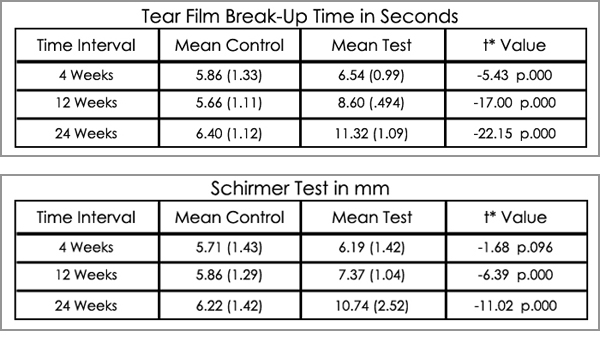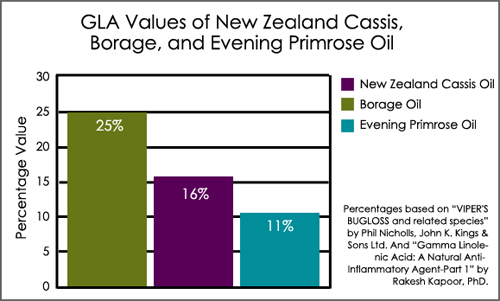
CAUSES OF DRY EYE SYMPTOMS
There are numerous causes of dry eye conditions, including the use of contact lenses, excessive screen and computer use, advanced ageing, menopause, and even a side effect of several prescription drugs.

Eight of the most prevalent causes of Dry Eye conditions, although scientists are continuing to reveal additional causes of this painful disease
STUDY RESULTS: GLA IMPROVES DRY EYES
Fortunately, the Postgraduate Department of Ophthalmology, Pharmacology, Therapeutics, and General Medicine, GMC, Jammu, recently studied the effects of essential fatty acid gamma linolenic acid (GLA) on dry eye conditions. The study included 100 dry eye sufferers, 50 of which were given GLA, artificial tears, and a mild steroid daily, while the remaining 50 received only the artificial tears and mild steroids. During this 24 week test, the group receiving GLA continued to see improvement in both the tear film break-up time, and the Schirmer Test.
Fortunately, the Postgraduate Department of Ophthalmology, Pharmacology, Therapeutics, and General Medicine, GMC, Jammu, recently studied the effects of essential fatty acid gamma linolenic acid (GLA) on dry eye conditions. The study included 100 dry eye sufferers, 50 of which were given GLA, artificial tears, and a mild steroid daily, while the remaining 50 received only the artificial tears and mild steroids. During this 24 week test, the group receiving GLA continued to see improvement in both the tear film break-up time, and the Schirmer Test.

Results “Gamma Linolenic Acid in Dry Eye” by Postgraduate Department of Ophthalmology, Pharmacology, and Therapeutics
RESEARCHERS STATE “GLA HAS A DEFINITE ROLE IN MANAGEMENT OF DRY EYES”
These researchers determined that “gamma linolenic acid has a definite role in the management of dry eyes”. Additional studies continue to explore the amazing abilities of GLA to reduce irritating and damaging dry eye symptoms, and New Zealand Cassis berries are one of only three main natural sources of this essential fatty acid (16%).

Data comparing the levels of GLA naturally found in the three main sources: Borage, Cassis, and Evening Primrose oils
